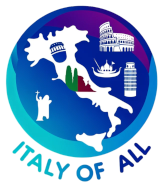The province of Perugia, situated in the heart of the Umbria region in central Italy, stands out for its extensive historical and cultural heritage, picturesque landscapes, and vibrant local economy. As the largest province in Umbria, Perugia encompasses a diverse range of environments from fertile valleys to mountainous terrains, and it serves as an important cultural and economic center in the region.
Geographically, Perugia is characterized by its varied landscape which includes the central part of the Tiber River valley, extensive olive groves, and vineyards, as well as parts of Lake Trasimeno, one of Italy’s largest lakes. The province’s terrain is predominantly hilly, offering stunning views and a favorable climate for agriculture, particularly olive oil and wine production.
Historically, Perugia has a rich history that dates back to the Etruscan period, evident in the city’s well-preserved walls and other archaeological sites. During the medieval and Renaissance periods, Perugia was a significant artistic center, home to painters like Pietro Perugino and Raphael. The historic center, with its ancient architecture including the Palazzo dei Priori and the Fontana Maggiore, reflects the city’s vibrant past and importance through the ages.
Culturally, Perugia is renowned for its annual events, such as the Umbria Jazz Festival, one of the most important jazz festivals in Europe, and Eurochocolate, an international chocolate exhibition that attracts visitors from all over the globe. The University of Perugia, founded in 1308, is one of the oldest universities in Italy, adding to the city’s lively atmosphere with a large student population.
Cuisine in Perugia is deeply rooted in local traditions, featuring dishes that highlight the region’s agricultural produce. Umbrian cuisine is known for its simplicity and the quality of its ingredients, such as truffles, legumes, and pork. Typical dishes include “umbricelli” (a type of thick pasta), served with a truffle or a tomato-based sauce, and “torta al testo,” a flatbread cooked on a stone and typically filled with local sausages or greens.
Economically, Perugia’s economy is diverse. The region thrives on a mix of agriculture, particularly known for its high-quality olive oil and wines like Sagrantino di Montefalco. Manufacturing also plays a significant role, with companies involved in chocolate production, textiles, and machinery. Tourism is another major contributor to the economy, supported by the province’s rich history, cultural festivals, and natural beauty.
Despite challenges such as maintaining sustainable tourism practices and supporting rural areas facing depopulation, Perugia is actively engaged in promoting economic development while preserving its environmental and cultural heritage. This includes fostering local industries and enhancing the infrastructure to support both tourism and agriculture.
Overall, the province of Perugia offers a compelling mix of historical significance, cultural richness, and economic vitality. Its commitment to preserving its heritage while fostering sustainable development ensures its continued prominence as a key destination and community within Italy’s Umbria region.
Comuni in Perugia Province:
- Bettona
- Assisi
- Bastia Umbra
- Bevagna
- Cardeto
- Castel Ritaldi
- Cannara
- Caravonica
- Cascia
- Campello sul Clitunno
- Castiglione del Lago
- Fossato di Vico
- Foligno
- Deruta
- Corciano
- Collazzone
- Città di Castello
- Citerna
- Costacciaro
- Cerreto di Spoleto
- Città della Pieve
- Fratta Todina
- Lisciano Niccone
- Magione
- Giano dell’Umbria
- Gualdo Tadino
- Gubbio
- Giano Vetusto
- Marsciano
- Massa Martana
- Gualdo Cattaneo
- Monte Santa Maria Tiberina
- Montefalco
- Monte Castello di Vibio
- Panicale
- Monteleone di Spoleto
- Montone
- Moiano
- Passignano sul Trasimeno
- Paciano
- Montecastello
- ** Nocera Umbra
- Norcia
- Poggiodomo
- Pietralunga
- Preci
- Perugia
- Piegaro
- Sigillo
- ** Scala Coeli
- Spoleto
- Scheggino
- Sellano
- Scheggia e Pascelupo
- Spello
- San Giustino
- Sant’Anatolia di Narco
- Valtopina
- Umbertide
- Todi
- Torgiano
- Vallo di Nera
- Tula (SS)Tuoro sul Trasimeno
- Trevi
- Valfabbrica
